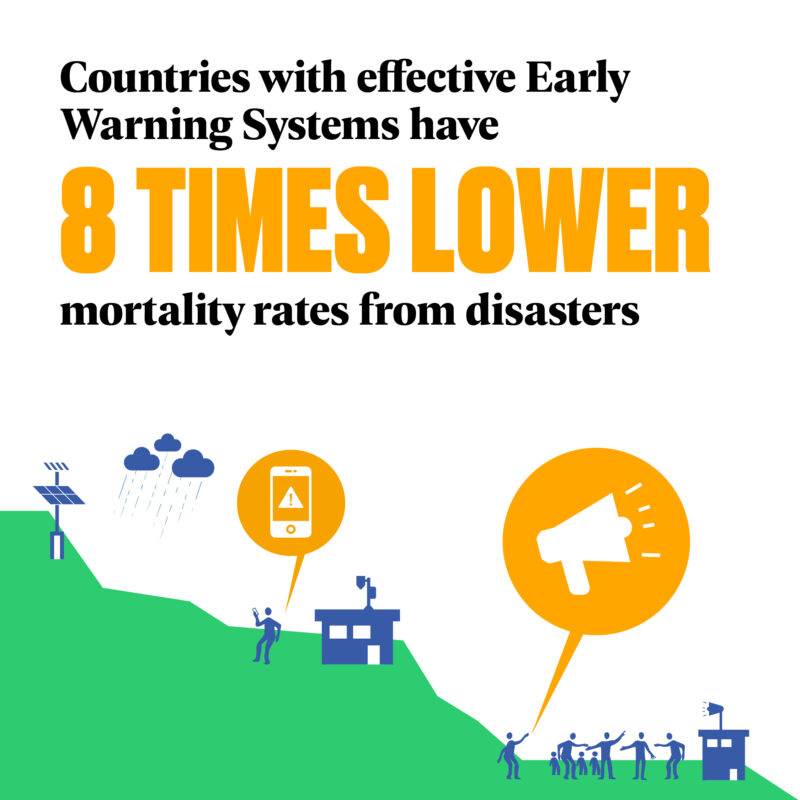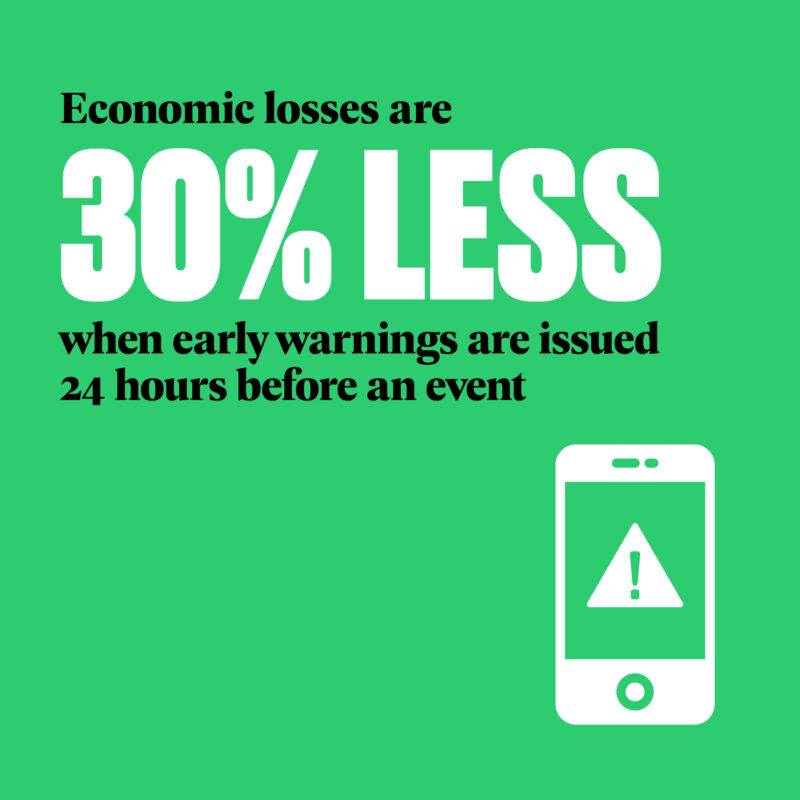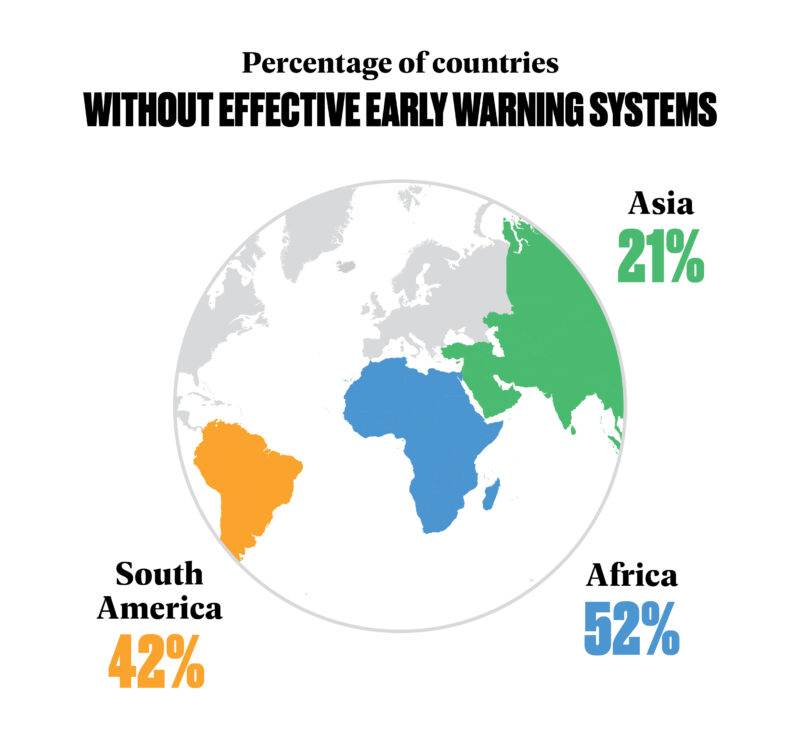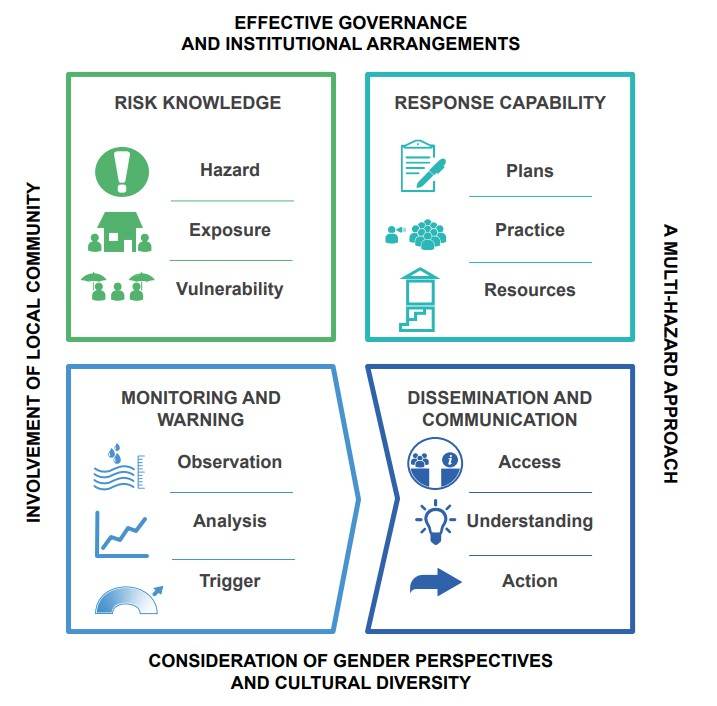At COP27, the Climate Movement Finally Promotes Early Warning Systems
Human and financial losses from disasters are increasing. Changes to the climate along with widening social inequalities will progressively make them worse. COP27 highlighted the need to prioritise reducing the risks and impacts from climate exacerbated natural hazards.
Early Warning Systems are proven interventions
Early Warning Systems and Anticipatory Action are proven, effective strategies that can save lives and livelihoods in advance of disasters. Practical Action have been working for decades across Asia, Latin America and Africa to develop and design effective Early Warning Systems (EWS) that ensure accurate, reliable, actionable and understandable information reaches everyone who needs it in the right way and in time for them to take action to protect themselves and other people, their assets, and livelihoods.


We need to do more to ensure everyone is covered by Early Warning Systems
However, there are currently gaps in coverage of EWS all around the world, with a third of people not covered by Early Warning Systems. The World Meteorological Organisation has assessed that 49% of Less Developed Countries do not have fit for purpose Early Warning Systems.
At COP27, several funding mechanisms and initiatives were discussed to implement effective EWS required to reduce these losses. In particular, the new Early Warning for All Initiative (EW4A) plan was launched. This means WMO and UNDRR will be investing $3.1 billion over 5 years to reach everyone with Early Warning Systems.


Future initiatives need to be people-centred
We need to make sure that this new and other existing funding is spent in the most appropriate, impactful way, prioritising the needs of the most vulnerable, empowering them to take action before disasters occur.
We need to focus on implementation that builds on existing capacities and knowledge to continue improving and addressing the biggest gaps, with a people-centred, inclusive approach that builds strong partnerships between government, science, civil society, research, and supports communities at risk to be involved in EWS design from the beginning.
Increased investments in improved monitoring, forecasting and national systems are needed and should be welcomed. But we need equal investment in systems, processes, structures and resources that provide people facing disasters with the accessible and understandable information they need to survive and thrive.
Where do we go from COP27?
As global experts on Early Warning Systems, Practical Action will be working with the Risk Informed Early Action Partnership (REAP) to inform and influence the development of the Early Warning for All Initiative, advocating for people-centred systems that put the most vulnerable at the centre of EWS design and implementation – making sure it is fit for purpose for those who are on the frontlines of climate change.
Want to learn more?
Watch these recordings from COP27:
- Anticipating Crises and Taking Early Action in Fragile and Conflict Affected States (FCAS)
- Mitigating climate risks, enhancing resilience: towards early warning systems for all
- Scaling-up early warning and early action through comprehensive disaster and climate risk management
- Science for adaptation action: building climate resilience through weather and climate services
- Turning Ambition Into Action Through the Power of Partnerships
Explore Practical Action’s work on Early Warning Systems
Authors:
Mirianna Budimir
Dr Mirianna Budimir is the Senior Climate and Resilience Expert in Practical Action. Her work at Practical Action includes improving the science-practice interface on topics such as disasters, early warning services, end-mile communication, gender, and international development.
Colin McQuistan
Colin McQuistan is head of Climate and Resilience at Practical Action. As a development practitioner for over 30 years he has seen first hand community based early warning systems in communities in Asia, Africa and Latin America. He is currently sharing these experience in the latest UNDRR Words into Action Guide for Multi-Hazard Early Warning Systems which will be published shortly.